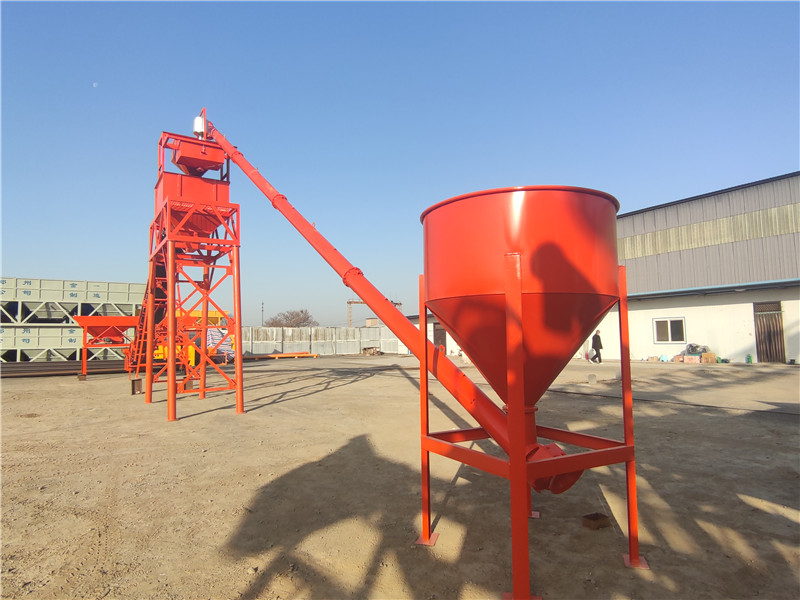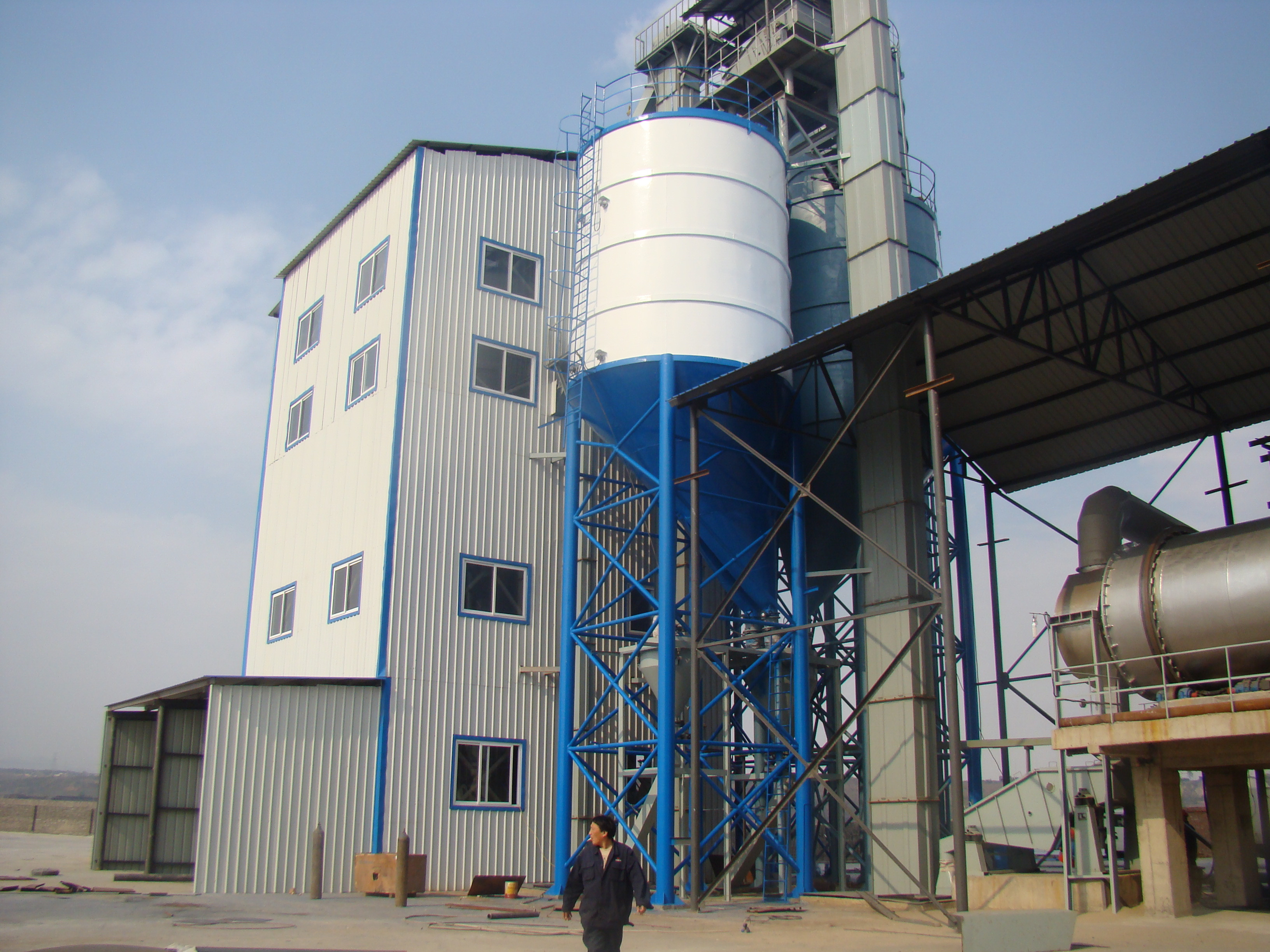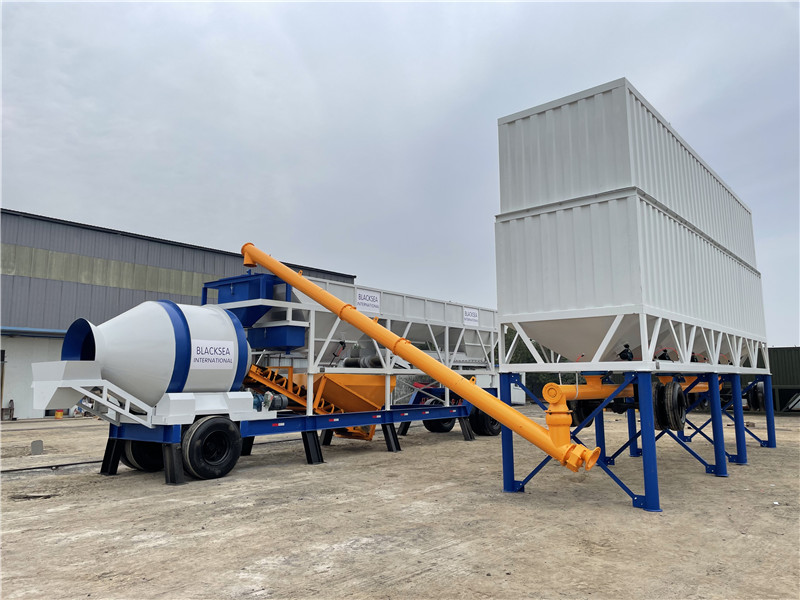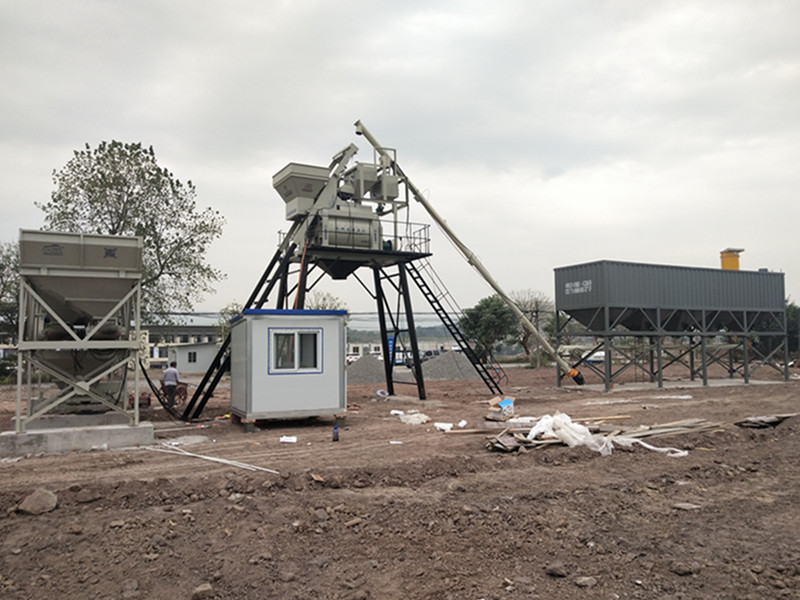In modern construction, the preparation method and equipment selection of concrete have a crucial impact on the efficiency and quality of the project. A common facility is a batch concrete plant, which can accurately control the proportion of each batch of concrete according to actual needs, ensuring the quality of the final product. In particular, dry mixed concrete, or dry concrete mix, is obtained by first mixing the dry components in this mixing plant, then transporting it to the construction site and adding water for final mixing.
On the other hand, wet batch concrete is a concrete that is mixed and mixed with water in the mixing plant and directly provided to the construction party, which ensures the uniformity and immediate availability of concrete. For projects that require high flexibility and rapid deployment, mobile concrete plant trucks provide an ideal solution, integrating mixing, metering and conveying functions in one, and can quickly respond to the needs of different locations.
In addition, dry batch concrete plants are specially used to produce dry mix concrete. Their characteristics are accurate material metering and efficient production processes, which make them widely used in large-scale engineering projects. By rationally selecting and applying these equipment and technologies, we can not only improve construction efficiency but also ensure that the project quality reaches the optimal state.
Dry mix concrete batching plants, also known as dry batch concrete plants, are specialized facilities designed for mixing concrete components—sand, gravel, and cement—without adding water at the batching site. These dry mix concrete plants prepare a mixture that is then loaded into a mixer truck, where water is introduced and mixed while en route to the construction site. The design of a dry mix batching plant ensures higher efficiency in production and lower energy consumption since the mixing process occurs without water initially. Dry batch concrete plants are favored for their ability to increase productivity and save time, allowing the fresh mixture to be used promptly upon arrival at the construction site. Additionally, these plants offer lower power consumption and operating costs compared to wet batch plants, contributing significantly to modern infrastructure projects such as roads and bridges.
Dry mix concrete batching plants provide an automated system that blends materials efficiently and requires shorter maintenance periods, making them ideal for extensive construction sites. The flexibility of dry mix concrete plants allows for better versatility in applications, ensuring that the concrete remains fresh during transport by maintaining the rotation order in the mixer truck. The advantages of a dry mix concrete plant extend to its high capacity and enhanced overall productivity, with the added benefit of reduced environmental impact due to lower energy consumption. This makes dry mix batching plants highly welcomed production equipment, perfectly suited for large-scale construction endeavors where quality, efficiency, and cost-effectiveness are paramount.
1. What is a dry mix concrete batching plant?
For the traditional dry concrete batching plant, there is a concrete mixer to mix all the materials like stone, sand, cement, water and addtive after being weighed. For a dry mix concrete batching plant, dry concrete plants mix aggregate materials such as sand, gravel and cement in precise sizes. The mixture is discharged into a mixer truck, mixed with metered water, and mixed in trucks on the way to the site.. It works in the following way:
1) Aggregates (sand and stone) are weighed by an aggregate batching machine and then delivered to an aggregate collecting hopper by belt conveyor;
2) On top of the aggregate collecting hopper, there are water, cement and additive scales. Water, cement and additive are weighed by the corresponding scale and then discharged into the aggregate collecting hopper;
3) Under the aggregate collecting hopper, a concrete transit mixer can stop and collect all the materials;
4) On the way to the work site, a concrete transit mixer will mix all the materials. When the transit mixer reaches work site, concrete is ready to use. Contact us.
2. Features of dry mix concrete batching plant.
1) Cost-saving. Higher throughput and lower energy consumption since no water is required for mixing
2) Much higher production capacity. For a traditional concrete batching plant, we need 60 seconds to get one batch of concrete, among which 25 to 30 seconds are used to mix all the materials. For the dry mix concrete batching plant, we don't need a mixer to mix materials, so we can save about 50% of time to get one batch of concrete. Production: 50–160 cubic meters/hour
3) The cooperation between dry concrete plant and mixer truck can improve productivity and save time.
4) Reduce construction time and increase productivity.
5) Compared with wet mixing equipment, dry concrete plant has lower power consumption.
6) The operating cost of dry concrete plant is relatively low
7) Compared with wet mixing equipment, dry concrete plant maintenance time may be shorter.
8) Like other mixing plants (such as mobile and stationary mixing plants), the dry concrete plant is also automated.
9) Dry concrete plant is a popular modern production equipment and continues to play an important role in the development and development of modern roads, bridges and various construction projects.
3. Where is a dry mix concrete batching plant usually used?
1) Projects that are far from the concrete batching plant. Normal concrete quality might be reduced after long time of transportation.
2) Concrete quality requirement is not very strict. Compared with the mixer, the mixing performance of transit mixer is not very good.
Know more about dry mix concrete batching plant:
The difference between dry mix concrete plant and wet mix concrete plant
How to Choose the Control system of Concrete Batching Plant
4. Our dry concrete batching plant is composed of the following parts.
1) aggregate batching machine;
2) aggregate loading belt conveyor;
3) cement silo;
4) screw conveyor;
5) water, cement and additive scales;
6) raw materials collecting hopper;
7) support legs;
8) central control system.
5. How a dry mix concrete batching plant works.
The Main feature of a dry mix concrete batching plant is that there is no concrete mixer. It works in this way:
The aggregate batching machine weighs all the aggregates, and then the aggregates are delivered by a belt conveyor to the aggregate collecting hopper which is controlled by a pneumatic cylinder. Cement scale, water scale, and additive scales are on the top of the aggregate collecting hopper. After weighing, cement, water and additive are discharged into the aggregate collecting hopper. At last, all the materials are discharged into a concrete transit mixer that stands below the aggregate collecting hopper. On the way to the work site, a concrete transit mixer will mix all the materials. When the concrete transit mixer reaches the work site, the concrete is ready to use.
Dry mix concrete batching plant can greatly increase the concrete production efficiency because the concrete transit mixer not need to wait for concrete mixer to mix all materials. For example, for belt conveyor concrete batching plant, we can get one batch of concrete in 60 seconds and the mixing time is 25s to 30s (adjustable), which means we can save half the time to get one batch of concrete by using dry mix concrete batching plant.
| Model | DHZS50 | DHZS60 | DHZS80 | DHZS120 | DHZS160 |
| Production capacity (m3/h) | 50 | 60 | 80 | 120 | 160 |
| Concrete mixer truck volume (m3) | 6 | 8 | 10 | 12 | 12 |
| Aggregate feeding mode | Belt conveyor | Belt conveyor | Belt conveyor | Belt conveyor | Belt conveyor |
| Aggregate batcher | PLD800 | PLD1200 | PLD1600 | PLD2400 | PLD3200 |
| Max. aggregate size (mm) | 60/80 | 60/80 | 60/80 | 60/80 | 60/80 |
| Discharging height (m) | 4.1 | 4.1 | 4.1 | 4.1 | 4.1 |
| Aggregate weighing accuracy (%) | ±2 | ±2 | ±2 | ±2 | ±2 |
| Cement weighing accuracy (%) | ±1 | ±1 | ±1 | ±1 | ±1 |
| Water weighing accuracy (%) | ±1 | ±1 | ±1 | ±1 | ±1 |
| Additive weighing accuracy (%) | ±1 | ±1 | ±1 | ±1 | ±1 |
| Total weight (T) | 7 | 12 | 18 | 25 | 30 |
| Control system | Computer | Computer | Computer | Computer | Computer |
7. Pictures of our dry mix concrete batching plant.
1)90m3/h dry mix concrete batching plant in Indonesia
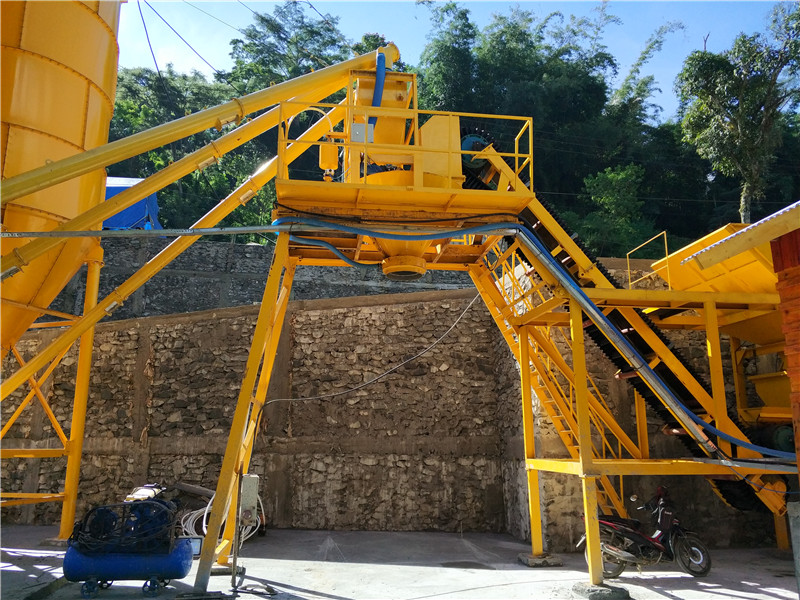

2) 60m3/h dry mix concrete batching plant delivered to Philippine


3) 20m3/h dry mix concrete batching plant delivered to Malaysia


4)Special Dry mix concrete batching plant to Philippines(with remote control)
5. 60m3/h dry mix concrete batching plant to Costa Rica


8. Videos of our dry mix concrete batching plant.
1) Stationary dry mix concrete batching plant
2) Mobile dry mix concrete batching plant
9. Except from dry mix concrete batching plant, we have mobile dry concrete batching plant, skip hoist concrete batching plant and foundation free concrete batching plant.











